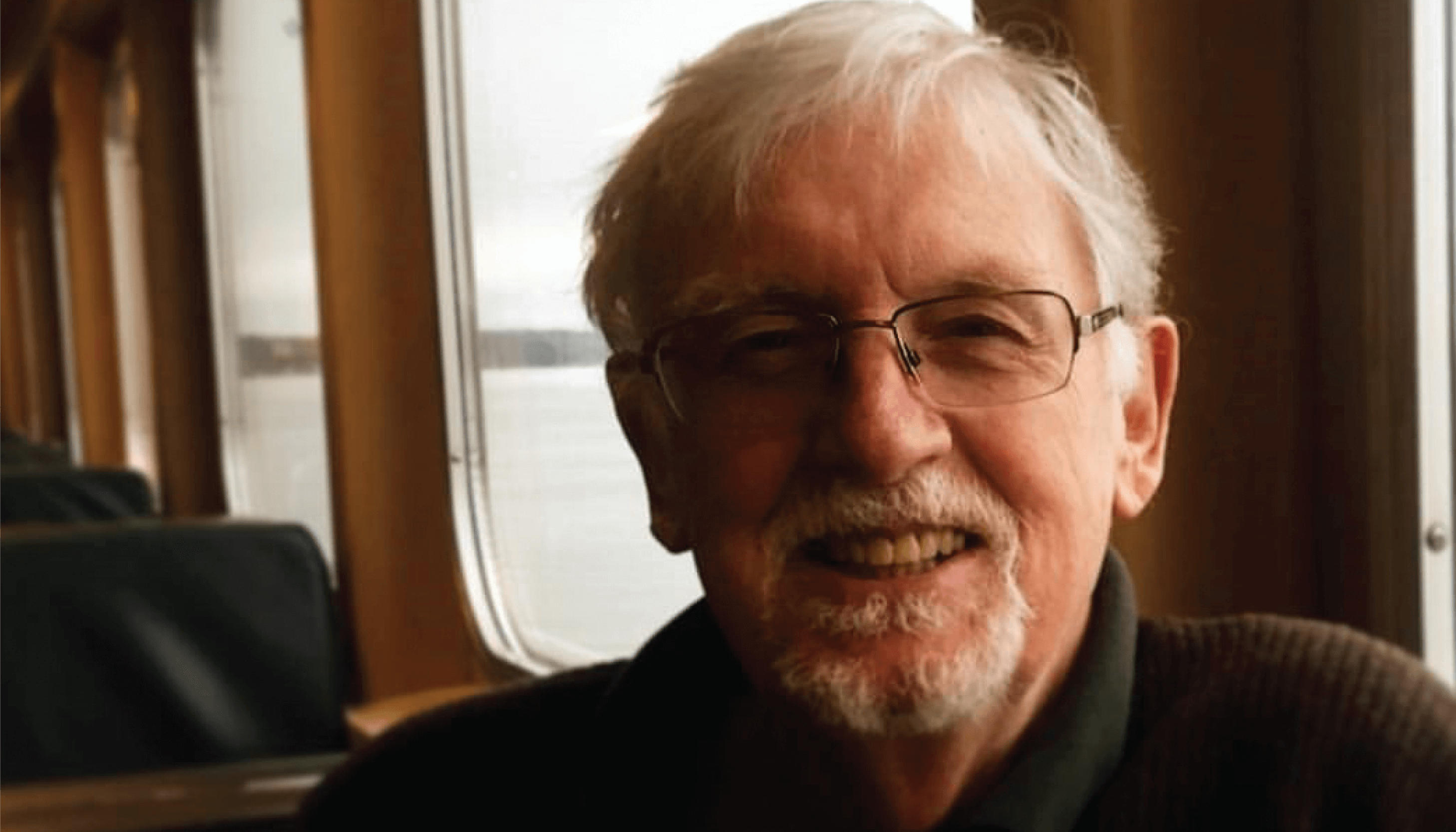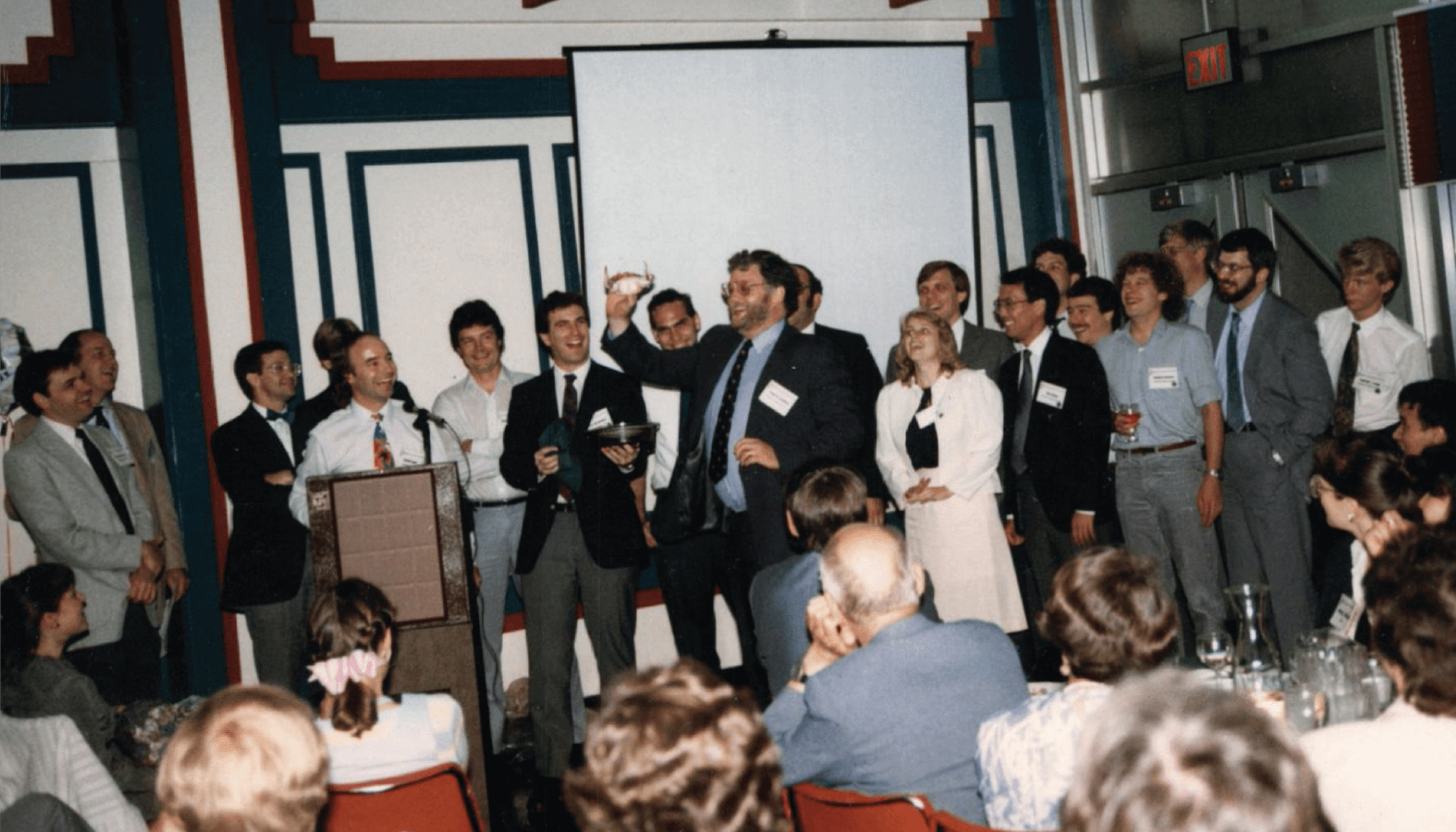If you’ve ever performed Fourier-transform infrared (FT-IR) spectrometry, then you’ve likely read – or at least heard of – the bestselling reference book on the subject by Peter Griffiths and James de Haseth. With a career spanning more than 50 years, Griffiths has pioneered the use of many techniques in vibrational spectroscopy, published over 300 papers, and was editor-in-chief of Applied Spectroscopy from 2009 to 2012. We spoke to him about his (initially on-off) relationship with spectroscopy, what he foresees for the field, and some of the strange, but fortuitous events that have led him where he is today.

Because I found that I wasn’t a very good physical organic chemist! I had originally wanted to pursue a career in that field, but discovered that it was most likely not my calling during my final exam on advanced organic chemistry at Oxford University – I couldn’t answer a single question on the topic! Luckily, there were a lot of other areas I could write about – but my original career aspirations came to a grinding halt. Instead, I decided to pursue a PhD in physical chemistry, and I ended up working on FT-IR spectroscopy in Sir Harold Thompson’s lab (or “Tommy,” as we knew him).
It may seem surprising, but I developed quite a strong aversion to FT-IR during my PhD. The spectrometer sometimes took hours to measure an interferogram and the data required extensive computing – you can imagine how tedious that process was during the 1960s. In the end, I decided I didn’t want to make spectroscopy my career – strange as this may seem now.
If I hadn’t been handed an opportunity in 1966, I’m not sure where I’d be today. I feel my life has been somewhat determined by a series of fortuitous events – this time in the form of a croquet game. A year before I earned my PhD, Tommy organized a conference on far-infrared spectroscopy that was attended by spectroscopists from all over the world. One afternoon, Tommy approached my friend Roger Lake and me and said, “Lord and Lippincott want to learn how to play croquet. Go and show them!” By this, he meant Dick Lord, a professor at MIT, and Ellis Lippincott, a professor at the University of Maryland – two of the biggest names in the field at that time. A year later, Roger was a postdoc with Dick Lord at MIT and I was working with Ellis Lippincott at the University of Maryland!
Lippincott sent me a list of nine projects I could work on as a post-doc; eight were spectroscopy-based. As you can guess from what I said before, I chose the ninth! The project involved trying to simulate conditions under which biologically important molecules could be formed on planets similar to Jupiter or its moons. As it happens, I missed collaborating with Carl Sagan on this project by one year! While in Lippincott’s lab, I did some research with an early FT-IR spectrometer and once my main project ended, the company who manufactured it offered me a position as product manager for a “new and improved” instrument that was under development. This instrument turned out to be the basis of all contemporary FT-IR spectrometers.
I didn’t really get on with the president of my division at this new company. Among other things, he often ignored my input – but one time, he didn’t. He asked me for a rough estimate of a parameter related to the sensitivity of the instrument we were developing. I gave him a number off the top of my head and he put it into a new brochure without consulting me further. Funnily enough, over 50 years later, I saw another company using exactly the same number for their new FT-IR spectrometer!
But what really pushed me in the direction of academia was something that happened while I was a technical consultant on a sales trip – another fortunate coincidence. We were talking to a chemistry professor who had received a National Science Foundation (NSF) grant that allowed him to purchase infrared spectrometers for two different wavelength regions. I asked him about his planned experiments, and it turned out I knew someone who had already published on the subject matter of his new grant. After we left his office, my colleague told me I had completely screwed up the sale – in slightly different words. I said I had simply told him about something he had missed; the sales guy replied, “No, you told him he was stupid!” Needless to say, we didn’t get the order – but I started to rationalize that, if that professor could receive a large grant for something that had already been done, I could do just as well – or maybe even better. So I started to apply for academic positions!
I’ve been asked a number of times to act as an expert witness for pharmaceutical patent cases, starting in the 1990s. The first was around a patent dispute over generic versions of Paxil, a blockbuster antidepressant. The case depended on a combination of infrared spectroscopy and chemometrics, which happen to be my specialties. I was also involved in a case concerning the conversion of coal to a form that was untaxed. Infrared spectra were needed to prove whether the treated coal was different from freshly mined coal.
I’m still involved in these types of projects today. An interesting recent one is addressing the impact of particulate matter below 2.5 microns on miners – particularly silicosis (lung fibrosis caused by silica inhalation). In the past, the preferred method was to collect particulate matter on a filter and run the samples through X-ray diffraction or infrared spectroscopy. However, you’d typically have to wait several days for the results – not very useful when you want to find out whether or not a miner has just been exposed to dangerous materials. Ideally, you need an instantaneous readout – and that’s what we’ve been working on.

What I’ve been most amazed by are the computational advances – computers are getting smaller and more powerful all the time. The components of an infrared spectrometer haven’t changed all that much, but the computers used to fill up a large room. It is remarkable that there are now handheld instruments in which the optics and electronics take up only a shade more space than a mobile phone.
The hot topics in FT-IR spectroscopy right now are microscopy and imaging using array detectors. Although both techniques have been around for well over 10 years, they have reached the point where some beautiful work is being carried out on some very significant topics, such as tumor characterization. Being able to see the stage of a given cancer quickly and objectively could be a game-changer. The technology isn’t quite there yet, but some superb work is being done in this area.
Of arguably equal importance is the work being done in infrared microscopy below the diffraction limit. These instruments are expensive, but so were FT-IR spectrometers in the early days – and we can expect further developments in the near future.
Another exciting area is tip-enhanced Raman spectroscopy (TERS), which has even higher spatial resolution than is possible by any IR technique. In fact, I recently reviewed a 60-page manuscript covering TERS applications for Applied Spectroscopy. In one of the papers discussed by the author, the Raman spectra of different regions of a single porphyrin molecule were shown!
I think the full story is yet to be told on this one, but I am intrigued to see just how important tunable IR lasers, such as quantum cascade lasers (QCLs), will become. Today, QCLs only cover a relatively short wavelength range – although that is changing every year – and they have limited stability. But if you can make a stable laser that can be rapidly tuned across the full mid-IR spectrum, then you’ve got the basis of an instrument that can do more than a standard FT-IR spectrometer. The currently short tuning range of QCLs limits the information content of the spectrum of, for example, pathological samples, such as biopsies. With a greater spectral range and higher sensitivity, it should be possible to measure spectra that allow the routine analysis of tissues and tumors at micrometer scales. Developments of QCLs and other mid-IR lasers over the last 15 years have been quite remarkable and we can expect more in the future.
While on the subject of lasers, I would be remiss if I didn’t mention the potential use of UV lasers for Raman spectroscopy. Because the intensity of Raman scattering is proportional to the fourth power of the excitation frequency (λ-4), lasers of a shorter wavelength have an advantage over visible lasers. They are also often less susceptible to fluorescence interference than visible lasers. As is often the case when only a few people use a technique, UV lasers are expensive. But, hopefully, as demand increases, the cost of these instruments will fall.
That’s a difficult question. I’ve dabbled in a fairly large number of different applications, but I think one of my more useful contributions has been in the interfacing of chromatographs and FT-IR spectrometers to identify the components of mixtures. MS has always been a step ahead in this area, but infrared spectra still have an important role to play in distinguishing isomers. The other areas are probably my work on diffuse reflection, open-path atmospheric spectroscopy, and surface-enhanced infrared spectroscopy.
I am also proud that the papers and books I’ve written have been cited over 10,000 times – and, 12 years after I retired, I’m still getting about eight citations per week. It’s great to know that other scientists have found, and still find, my work useful.
But I’m probably most proud of the fact that, during my time as a professor, 52 graduate students earned their PhDs under my supervision. The students were often “diamonds in the rough,” and I have always been happy to see so many of them go on to successful careers, usually in industrial labs.
Look to see what’s hot and where it’s going. Don't get stuck doing the same old stuff over and over again, but have fun doing what you’re doing. The other thing I would say is to go to as many conferences as you can (this is perhaps even more possible now that so many are online) and join scientific societies. Societies allow you to meet people in your field and gain a grasp of the big things that are happening before they appear in print.
Most importantly, have the courage to go and talk to the big names in your field! Every vibrational spectroscopist that I have met is very personable and there’s little competition between academic groups. You’d be surprised how many people really love talking with young, enthusiastic scientists who are just getting into the field, so why not give it a try?




